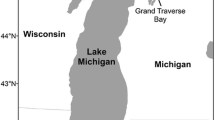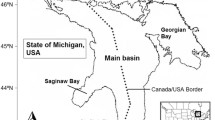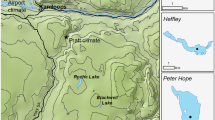Abstract
The restoration and rehabilitation of the native fish communities is a long-term goal for the Laurentian Great Lakes. In Lake Superior, the ongoing restoration of the native lake trout populations is now regarded as one of the major success stories in fisheries management. However, populations of the deepwater morphotype (siscowet lake trout) have increased much more substantially than those of the nearshore morphotype (lean lake trout), and the ecosystem now contains an assemblage of exotic species such as sea lamprey, rainbow smelt, and Pacific salmon (chinook, coho, and steelhead). Those species play an important role in defining the constraints and opportunities for ecosystem management. We combined an equilibrium mass balance model (Ecopath) with a dynamic food web model (Ecosim) to evaluate the ecological consequences of future alternative management strategies and the interaction of two different sets of life history characteristics for fishes at the top of the food web. Relatively rapid turnover rates occur among the exotic forage fish, rainbow smelt, and its primary predators, exotic Pacific salmonids. Slower turnover rates occur among the native lake trout and burbot and their primary prey—lake herring, smelt, deepwater cisco, and sculpins. The abundance of forage fish is a key constraint for all salmonids in Lake Superior. Smelt and Mysis play a prominent role in sustaining the current trophic structure. Competition between the native lake trout and the exotic salmonids is asymmetric. Reductions in the salmon population yield only a modest benefit for the stocks of lake trout, whereas increased fishing of lake trout produces substantial potential increases in the yields of Pacific salmon to recreational fisheries. The deepwater or siscowet morphotype of lake trout has become very abundant. Although it plays a major role in the structure of the food web it offers little potential for the restoration of a valuable commercial or recreational fishery. Even if a combination of strong management actions is implemented, the populations of lean (nearshore) lake trout cannot be restored to pre-fishery and pre-lamprey levels. Thus, management strategy must accept the ecological constraints due in part to the presence of exotics and choose alternatives that sustain public interest in the resources while continuing the gradual progress toward restoration.
Similar content being viewed by others
Author information
Authors and Affiliations
Additional information
Received 10 December 1999; accepted 13 June 2000.
Rights and permissions
About this article
Cite this article
Kitchell, J., Cox, S., Harvey, C. et al. Sustainability of the Lake Superior Fish Community: Interactions in a Food Web Context. Ecosystems 3, 545–560 (2000). https://doi.org/10.1007/s100210000048
Published:
Issue Date:
DOI: https://doi.org/10.1007/s100210000048




